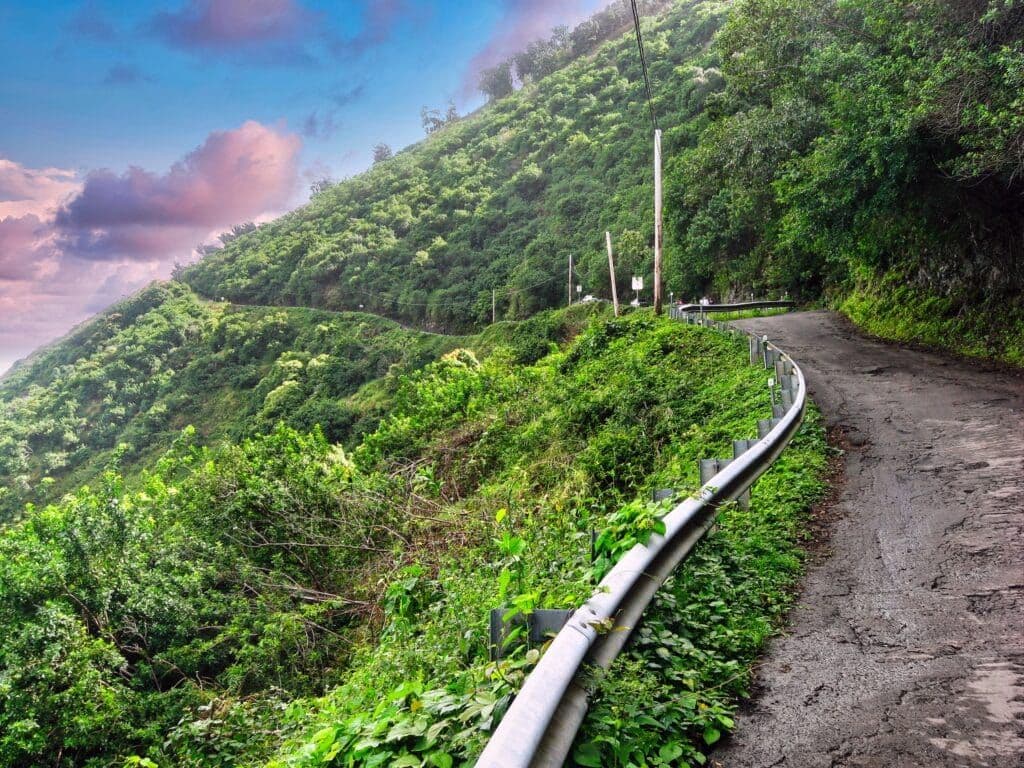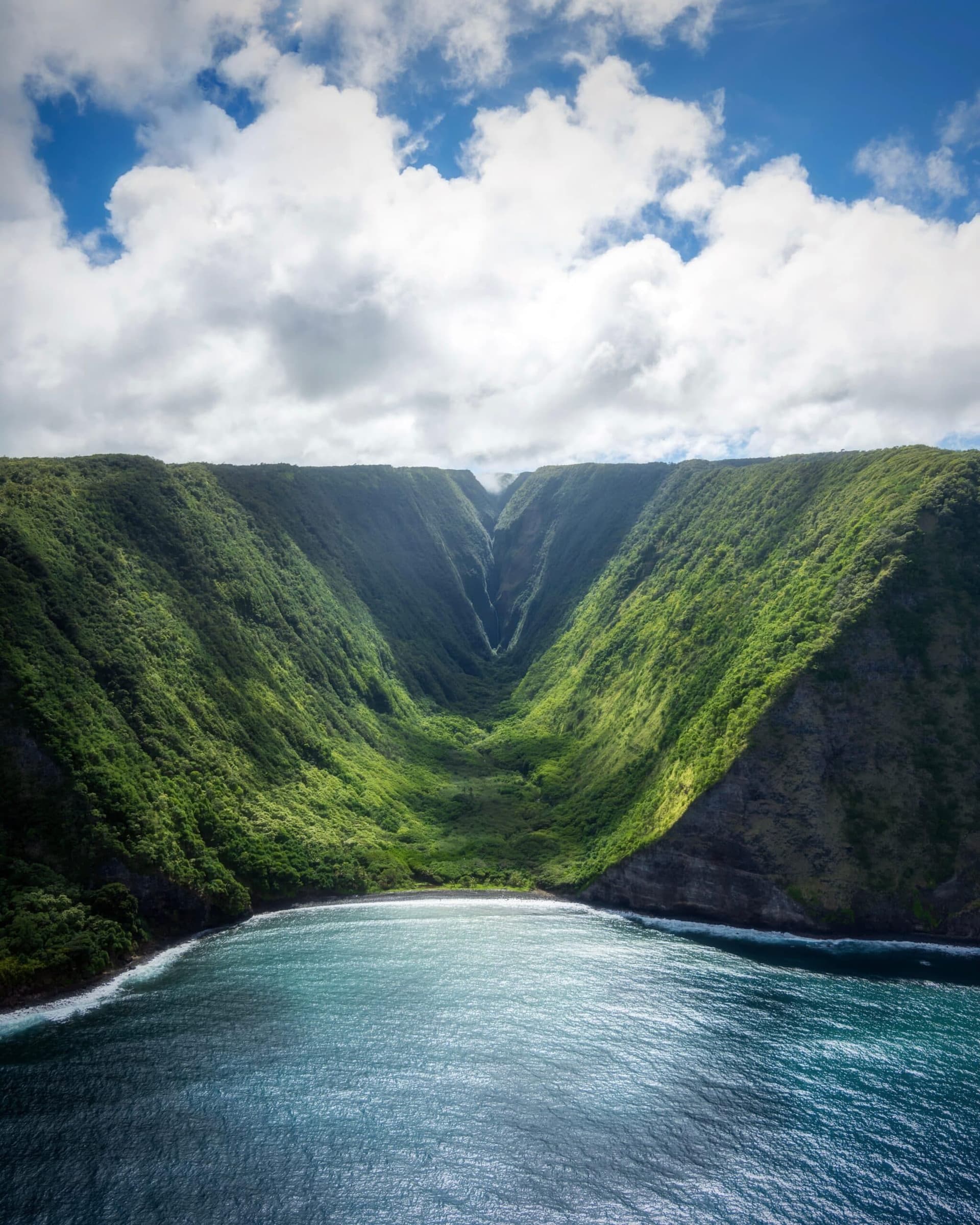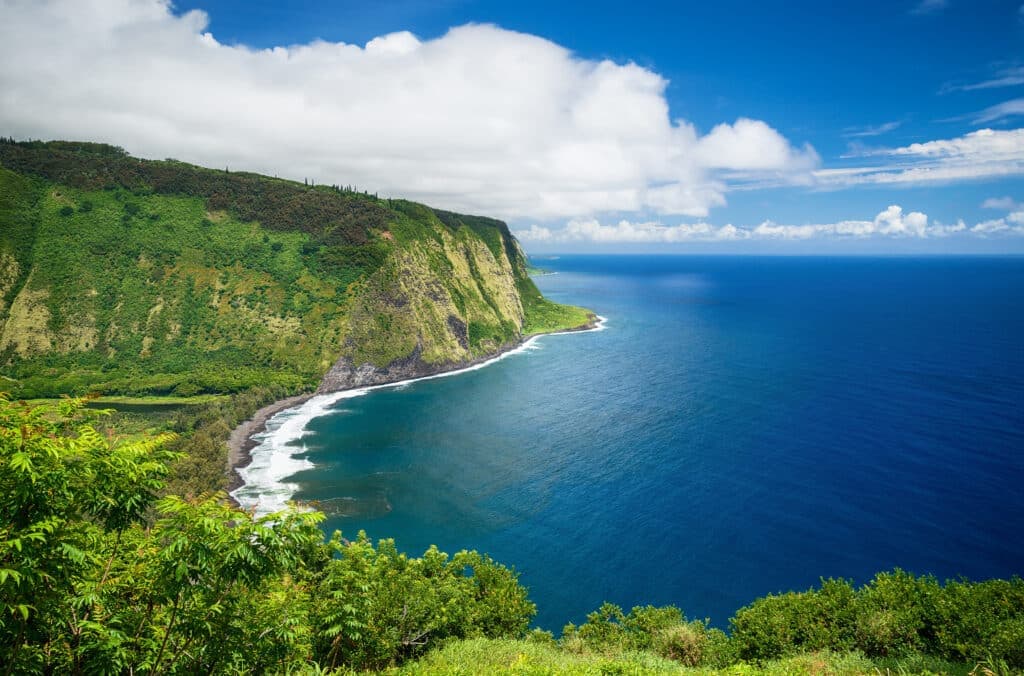By M. Kruse

Waipio Valley Road. Courtesy of Shutterstock.
This article was originally published on April 21, 2025, and was updated Oct. 7, 2025.
Waipiʻo Valley (pronounced why‑pee‑oh) lies on the rugged Hāmākua Coast of Hawaiʻi Island (the Big Island). The name means “curved water,” referencing the valley’s winding river that empties into the black‑sand beach below. But more than its landscape, Waipiʻo holds deep mana (spiritual energy), as a site where Hawaiian royalty, myth and culture converge.
Nicknamed the “Valley of the Kings,” Waipiʻo was once the political and spiritual center of ancient Hawaiʻi. Starting around the 15th century, it was home to aliʻi (chiefs) such as King Līloa, and later became a training ground for Kamehameha I, who unified the islands. The valley’s fertile soils nurtured loʻi kalo (taro patches), and sacred heiau (temple sites) dotted its slopes, many still hidden in jungle terrain.
Over centuries, Waipiʻo’s population declined — significantly after devastating tsunamis in 1946 and 1960 — leaving only a small number of residents and stewards who maintain taro farming and cultural practices to this day.
Important: As of this guide’s update, public access into the valley floor is heavily restricted.
Since February 25, 2022, the Waipiʻo Valley Road has been closed to the general public for safety reasons (rockfall, slope instability, erosion).
In September 2022, access was partially restored, but only for Big Island residents, county‑permitted tour operators, and those exercising Native Hawaiian traditional or customary rights — and only in covered 4WD vehicles.
Nonresident visitors may no longer drive, hike or enter the valley independently.
The Waipiʻo Valley Lookout (scenic vantage from above) remains open to all visitors.
Because of these restrictions, the only way for most visitors to experience the valley floor is via authorized tours (e.g. shuttle tours, horse tours) permitted by the county.
Rental cars are explicitly prohibited from using the valley road, and many companies void coverage if you attempt it.
The Waipiʻo Valley Overlook is located along Route 240 near Honokaʻa and is easily accessible by standard vehicle.
It offers panoramic views of black‑sand coastline, steep cliffs, waterfalls, the valley river and ancient agricultural terraces.
Amenities at the lookout include parking, picnic tables, interpretive signage and restrooms.
Tip: Visit at sunrise or early morning for cooler temperatures, fewer clouds and optimal light for photography. Clouds often accumulate later in the day.
Because independent access is restricted, your best option is booking a guided tour into Waipiʻo Valley. Tours can include shuttle rides, narrated cultural experiences, and limited time on the valley floor.
Waipiʻo Valley Shuttle — A 1.5‑ to 2‑hour guided 4WD shuttle tour throughout permitted valley roads.
Horseback / Mule Tours — Some providers historically offered cowboy‑style tours into the valley; check current status.
Tours often include visits to taro fields, river crossings, waterfall views, black sand beach (within permitted areas) and cultural narration.
Reservation required: tours may fill in advance, especially during peak travel season.

Waipio Valley as seen from the coast. Courtesy of Shutterstock.
Even from the lookout and on a guided tour, you’ll witness many of Waipiʻo’s treasured features:
Hi‘ilawe Falls — One of Hawaiʻi’s tallest waterfalls (over 1,000 ft), cascading along the back wall of the valley. Often visible from distant vantage points.
Seasonal waterfalls (e.g. Kaluahine Falls) become more pronounced after heavy rains.
Tarō fields (lo‘i) — Historic taro terraces dot the valley floor, sustained by traditional irrigation systems that are still in use by descendants.
Wild horses — There are reports and sightings of horses roaming the valley’s lower pastures. Many visitors hope to glimpse them during tours.
Black sand beach & surf — The valley’s beach is dramatic, but ocean conditions can be dangerous; tour guides typically manage safe access zones.

Waipio Valley Lookout view on Big Island, Hawaii (Shutterstock)
Only use authorized tours for valley-floor access. Attempting to walk, hike or drive in independently is considered trespass.
Show respect: Waipiʻo is wahi pana (a storied, sacred place). Observe boundaries, avoid disturbing archaeological sites and stay with your guide.
Bring essentials: Water, snacks, sun protection, camera, insect repellent — valley interior has no visitor services.
Be ready for changing weather: Rainfall can be sudden and heavy, particularly in the upland zones.
Watch for closure updates: The road status may evolve as repairs proceed; always check official Hawaiʻi County or Go Hawaiʻi pages before visiting.
If hiking adjacent trails beyond Waipiʻo (e.g. Waimanu / Muliwai Trail), you’ll need permits and often access via remote trailheads rather than via the valley road.
Drive via Route 19 → Route 240 to the Waipiʻo Valley Overlook.
Enjoy the lookout views, take photos, read interpretive signs.
Join a pre-booked shuttle or guided tour into permitted zones.
Explore taro fields, river corridors, waterfalls, black sand beach (within the guide’s permitted zones).
Return to the overlook and maybe explore nearby Honokaʻa or Hamakua Coast sites (waterfalls, botanical gardens, historic towns).
Join our newsletter for travel inspiration, insider tips and the latest island stories.
By subscribing, you agree to receive emails from Hawaii.com. You can unsubscribe anytime. See our Privacy Policy.